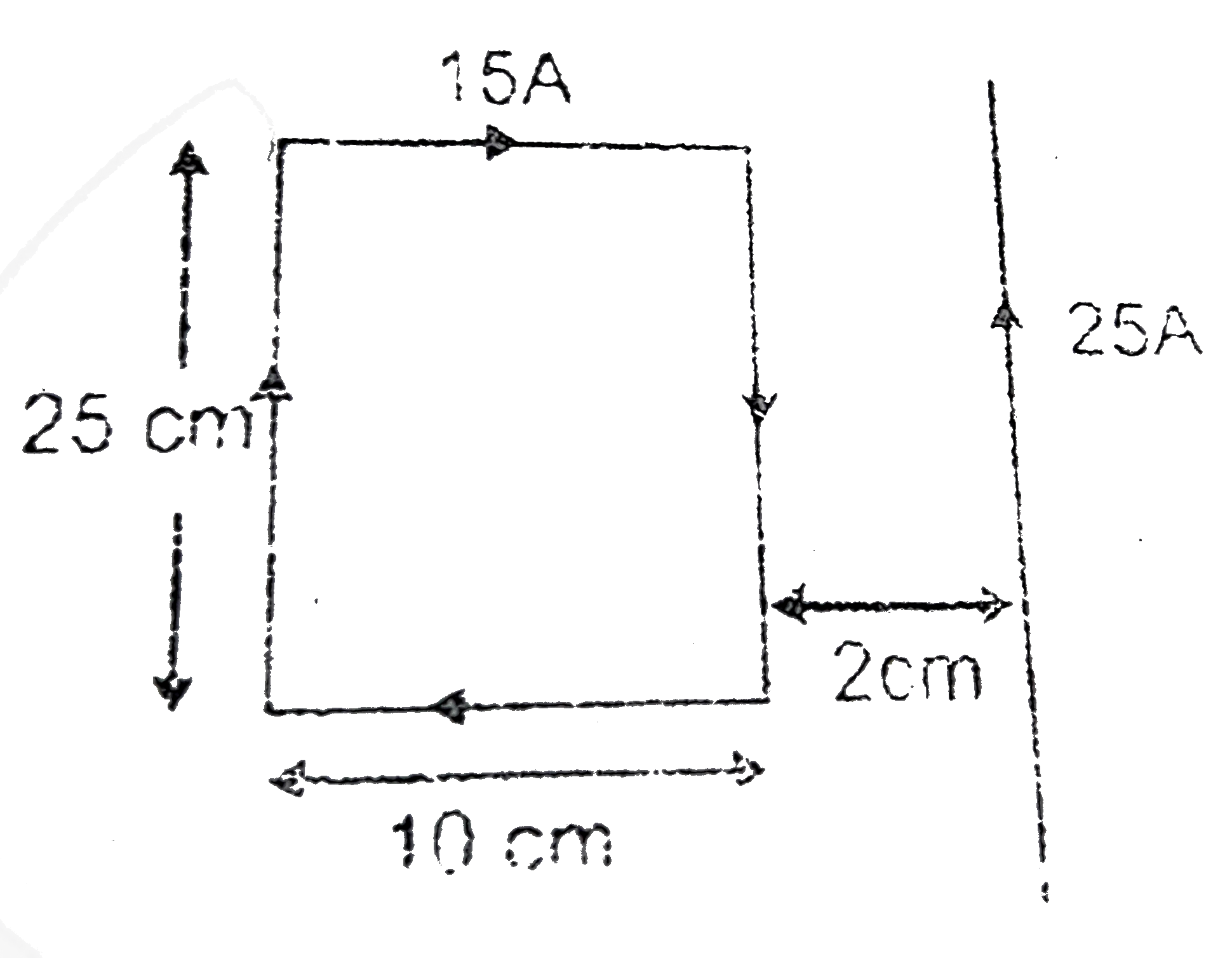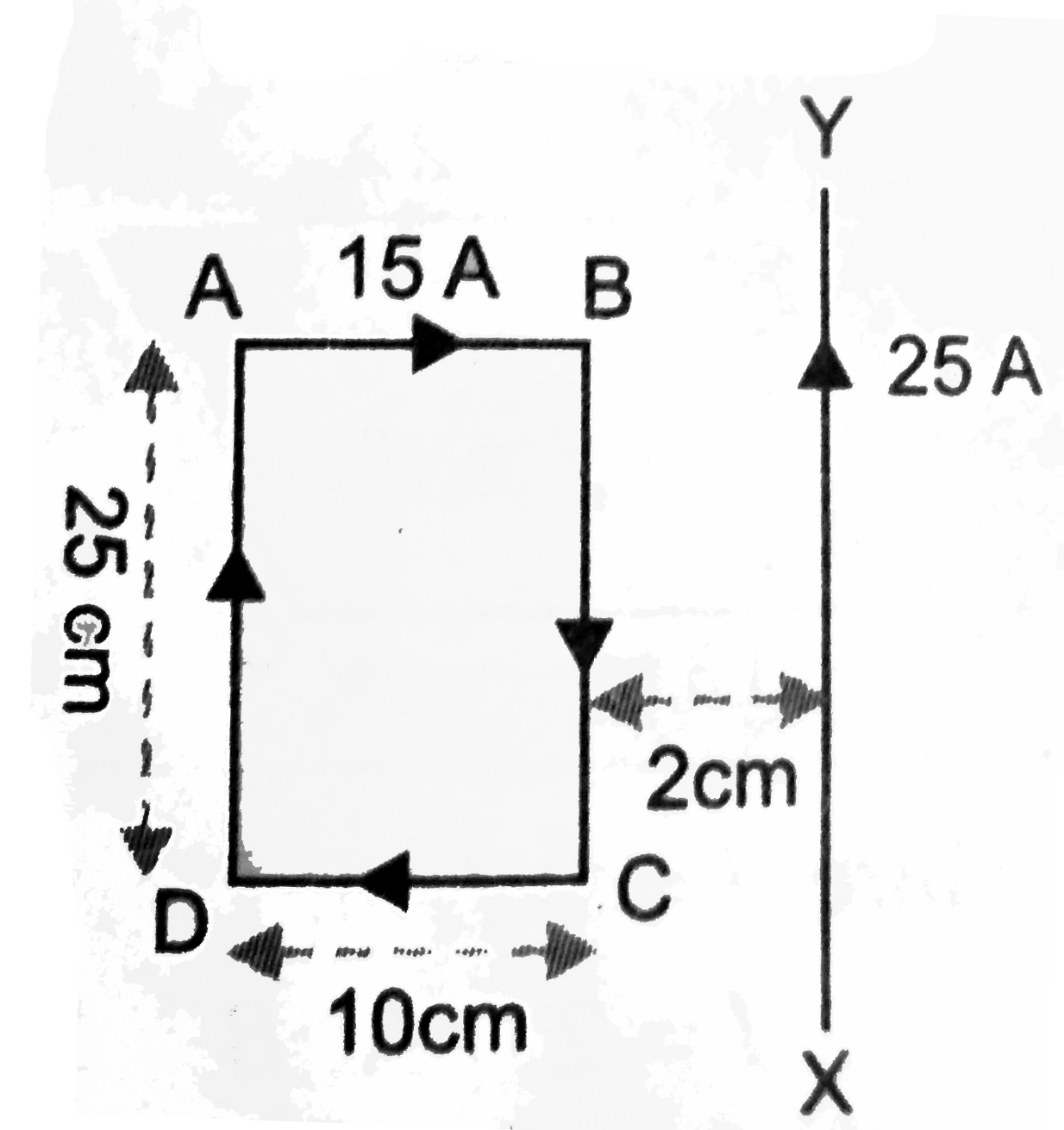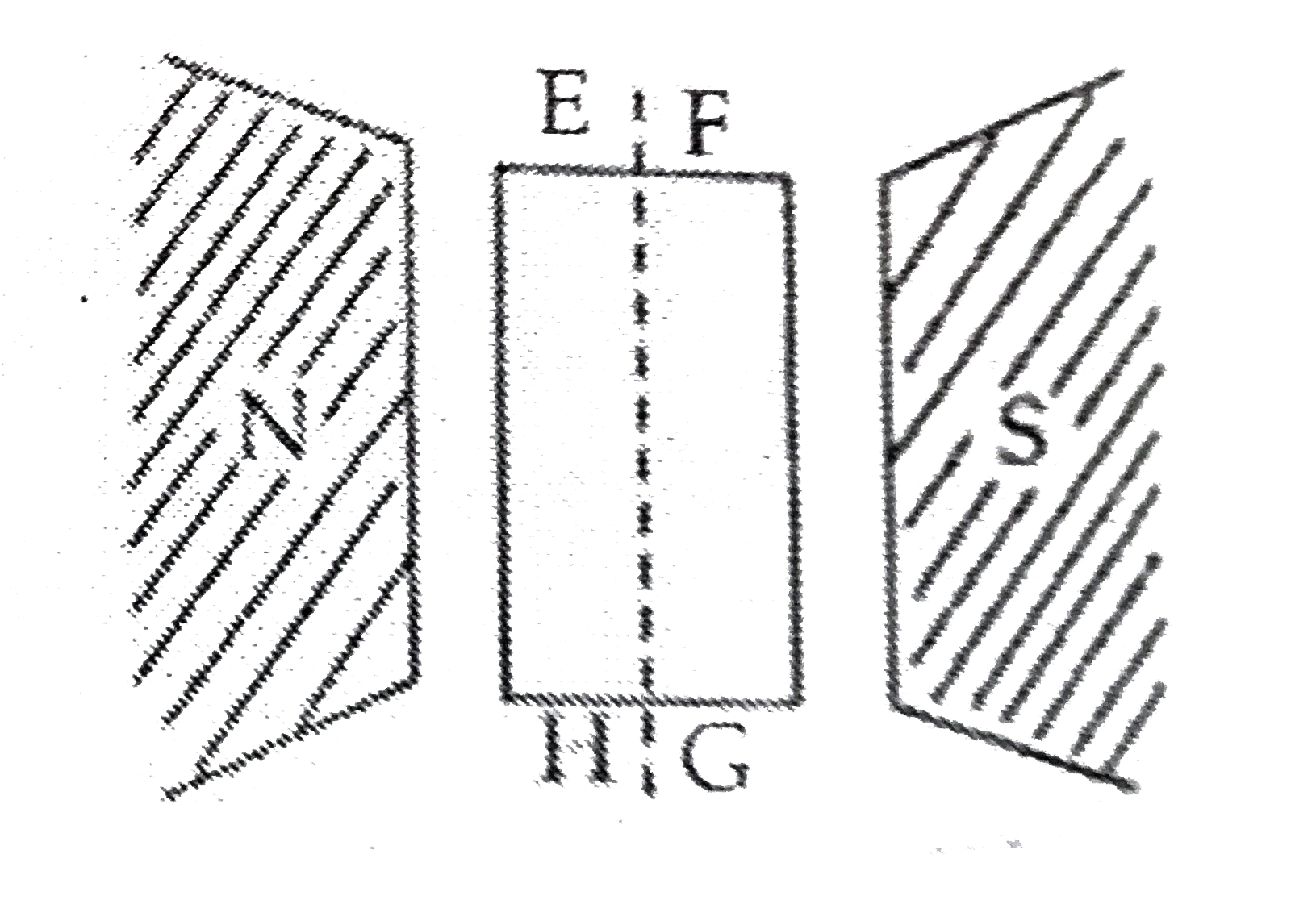Depict the magnetic field lines due to two straight, long parallel conductors carrying current I1 and I2 in the same direction.Hence deduce an expression for the force acting per unit length on one conductor due to the other.Is this force attractive or repulsive?
Figure shows a rectangular current carrying loop placed 2cm away from a long,straight, current-carrying conductor.What is the direction and magnitude of the net force acting on the loop?

Force between two parallel current carrying wires :AB and CD are two infinitely long conductors placed parallel to each other and separated by distance r.They carry currents I1 and I2 in the same direction.Magnetic field produced by current l1 at any point of CD is
B1=π0l12πr
This field acts perpendicular to CD and into the plane of paper.It exerts a force on wire CD carrying current I2 Force exerted on unit length of CD is
F=B1=I2l=π0I12πr×I2×1 or F=π1I1I22πr
or π04π.2I1I2r
By Fleming,s left hand rule, this force acts on CD towards AB.Similarlarly consuctor CD also exerts an equal force AB towards itself.Hence the two wires get attracted towards each other. Numerical:
Force an ABF1=π04π2I1I2r1×length of AB
=10−7×2×15×2512×10−2×25×10−2
=1.5625×10−4N(repulsive away form XY)
Net force on the loop F=F1−F2
=(9.375−1.5625)×10−4
=7.8125×10−4 (attactive towards XY).


Topper's Solved these Questions
- ELECTRODYNAMICSBOOK - RESONANCECHAPTER - ELECTRODYNAMICSEXERCISE - Advanced level problems
31 Videos
- ELECTRODYNAMICSBOOK - RESONANCECHAPTER - ELECTRODYNAMICSEXERCISE - Exercise-3 PART-2
27 Videos
- ELECTRO MAGNETIC WAVESBOOK - RESONANCECHAPTER - ELECTRO MAGNETIC WAVESEXERCISE - Exercise 3
27 Videos
- ELECTROMAGNETIC INDUCTIONBOOK - RESONANCECHAPTER - ELECTROMAGNETIC INDUCTIONEXERCISE - A.l.P
19 Videos
Similar Questions
Figure shows a rectangular current-carrying loop placed 2cm away from a long, straight, current carrying conductor. What is the direction and magnitude of the net force acting on the loop?

View SolutionThe direction of magnetic field lines due to straight conductor carrying current is given by……………….. .
View Solution
Knowledge Check
The force acting per unit length on one conductor due to the other for two long parallel current - carrying wires is
Aμ04πI1I2rBμ04πI1I2rCμ04π2I1I2rDμ04πI1I24rThe direction of magnetic field lines close to a straight conductor carrying current will be
Aalong the length of the conductorBradially outwardCcircular in a plane perpendicular to the conductorDhelicalMagnetic lines of force due to a straight conductor carrying current are
AStraight linesBEllipticalCCircularDParabolic
What is the shape of magnetic field lines due to a straight current - carrying conductor ?
View SolutionWhat is the form of magnetic field lines due to a straight current-carrying conductor?
View SolutionWhat is the form of magnetic field lines due to a straight current-carrying conductor?
View SolutionThe strength of the magnetic field around a long straight current carrying conductor :
View Solution(a) Two straight long parallel conductors carry currents I1 and I2 in the same direction. Deduce the expression for the firce per unit length between them.
Depict the pattern of magnetic field lines around them.
(b) A rectangular current carrying loop EFGH is kept in a uniform magnetic field as shown in the figure.
(i) What is the direction of the magnetic moment of the current loop ?
(ii) What is the torque acting on the loop (A) maximum, (B) zero ?

View Solution